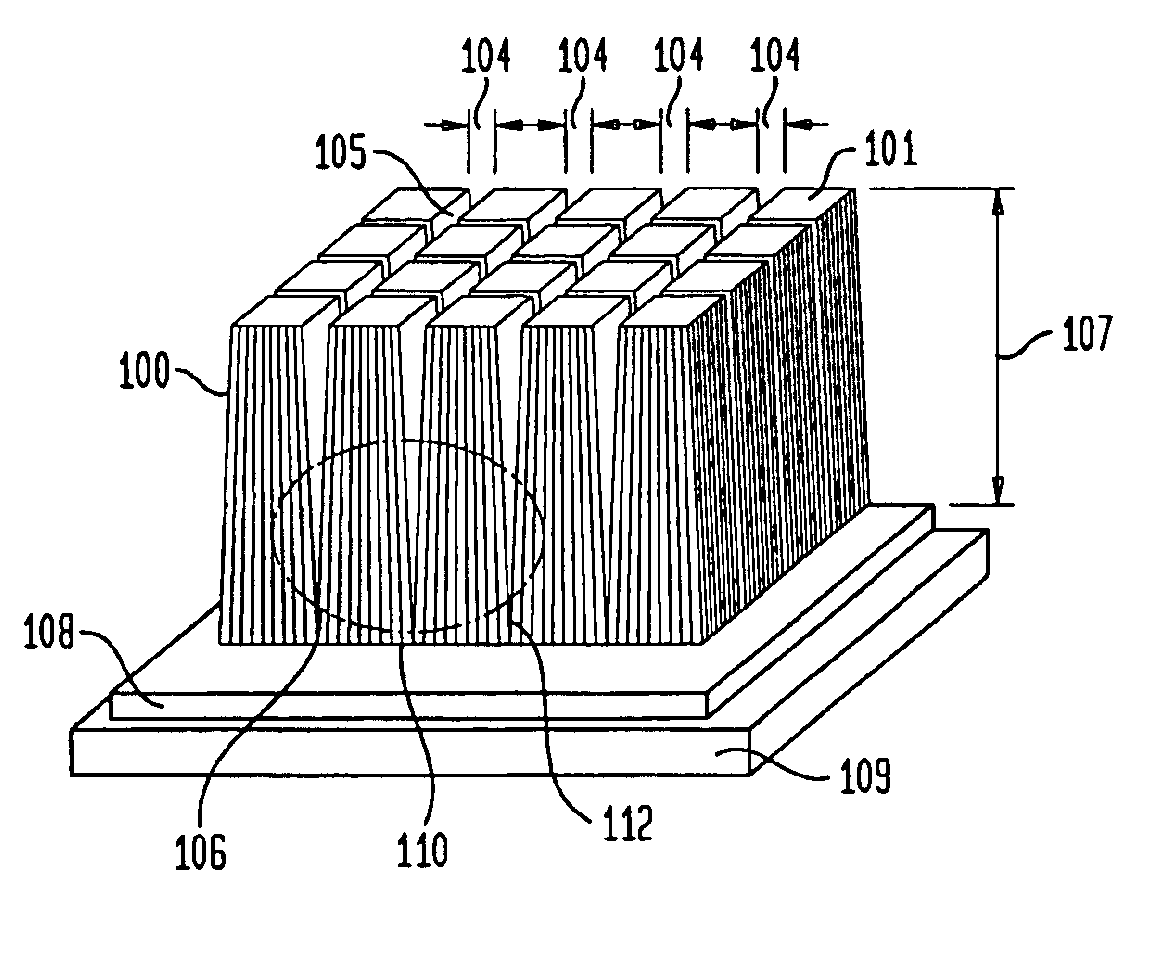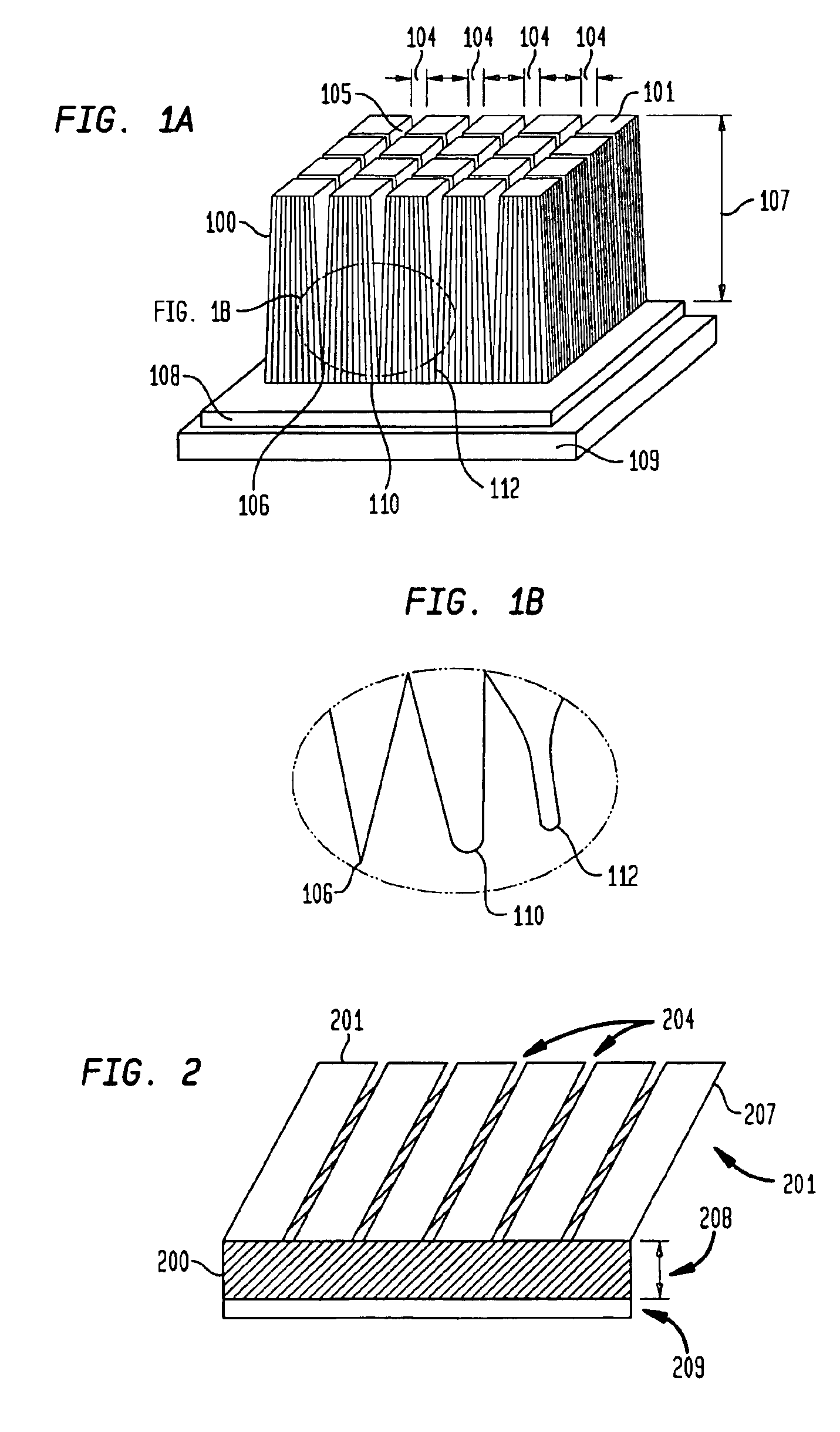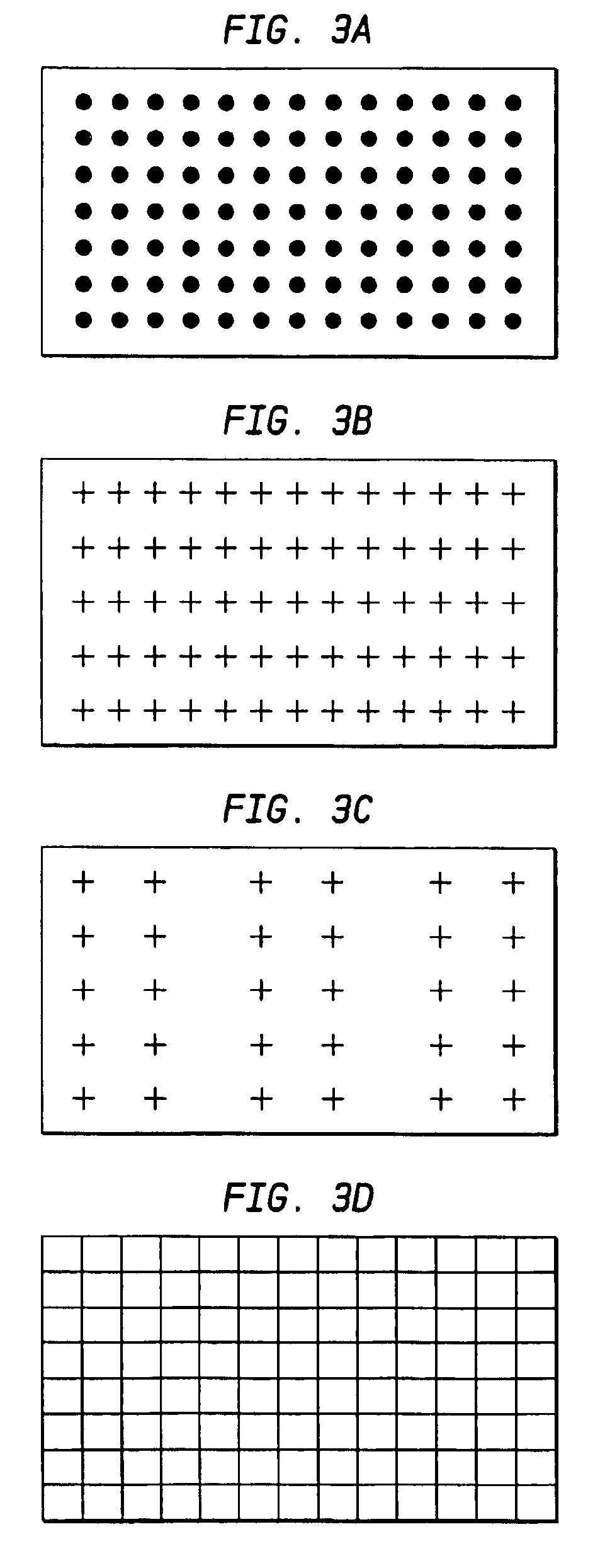Pixellated micro-columnar films scintillator
a micro-columnar film and scintillator technology, applied in the direction of optical radiation measurement, radiation controlled devices, instruments, etc., can solve the problems of limited dynamic range, limited contrast sensitivity, significant inherent limitations of film-screen techniques, etc., to reduce optical crosstalk, increase efficiency, and reduce optical crosstalk
- Summary
- Abstract
- Description
- Claims
- Application Information
AI Technical Summary
Benefits of technology
Problems solved by technology
Method used
Image
Examples
example 1
Vapor Deposition
[0023]In a first illustrative embodiment microcolumnar scintillation film material has column diameters in the range of 3 to 5 μm. In this embodiment columns were formed from thallium doped cesium iodide (“CsI:Tl”) that was deposited on a suitable substrate. Film deposition was performed by vapor deposition using high vacuum thermal evaporation from a localized source onto the substrates undergoing planetary rotation during vapor deposition. A thermal evaporator having a planetary system fitted with multiple planets was used.
[0024]During thermal deposition the substrate temperature was maintained at approximately 150 C using a computer controlled halogen lamp heater system (Model QLH0500, Kurt Lesker Company). The evaporation chamber was pumped to a pressure of 5×10−7 torr prior to deposition and the film growth was monitored and controlled using a closed-loop quartz thickness monitor system.
[0025]To enhance scintillation efficiency, Tl activator concentration in vap...
example 2
[0038]In an alternative illustrative embodiment sputter deposition of CsI:Tl was accomplished by using a planar magnetron sputtering deposition system (Kurt Lesker). Prior to the sputtering process, a high vacuum of 10−7 torr was obtained using a cryogenic pump (oil vapor free) attached to the process chamber. The process chamber contained a substrate holder that was rotated at a speed of approximately 20 rpm to improve the uniformity of the film. A halogen light heater (Model QLH-SPLI, Kurt Lesker Company) was attached to the back side of the substrate holder to maintain substrate temperature at approximately 270° C. during the sputtering process.
[0039]In this alternative illustrative embodiment commercially available crystalline CsI:Tl targets were used for sputter deposition. To provide optimum material usage and improved deposition rates, the target design was modified to allow the application of high sputtering power while offering low thermal resistance. The ...
example 3
Post Pixellation Coatings
[0042]Once the micro columnar scintillation film material is pixellated the post pixellated micro columnar scintillation film material is coated. The post pixellation coatings enhance the light collection efficiency of the screen, prevent the inter-pixel light from spreading, and protect the micro columnar scintillation film material from moisture and mechanical damage during normal handling. It has been observed that the pixellated screens show loss of light output beyond what is expected based on the loss of screen fill factor. Pixellated films show approximately 55% light output compared to non-pixellated films. Total gain in the light output after SiO coating (compared to pixellated but uncoated film) varied between 15% to 25%. Therefore, laser pixellated screens coated with SiO showed approximately 63% to 68% light output of a non-pixellated and un-processed CsI:Tl screen. Further enhancement of light collection efficiency of the pixellated screen can b...
PUM
| Property | Measurement | Unit |
|---|---|---|
| size | aaaaa | aaaaa |
| width | aaaaa | aaaaa |
| size | aaaaa | aaaaa |
Abstract
Description
Claims
Application Information
 Login to View More
Login to View More - R&D
- Intellectual Property
- Life Sciences
- Materials
- Tech Scout
- Unparalleled Data Quality
- Higher Quality Content
- 60% Fewer Hallucinations
Browse by: Latest US Patents, China's latest patents, Technical Efficacy Thesaurus, Application Domain, Technology Topic, Popular Technical Reports.
© 2025 PatSnap. All rights reserved.Legal|Privacy policy|Modern Slavery Act Transparency Statement|Sitemap|About US| Contact US: help@patsnap.com



